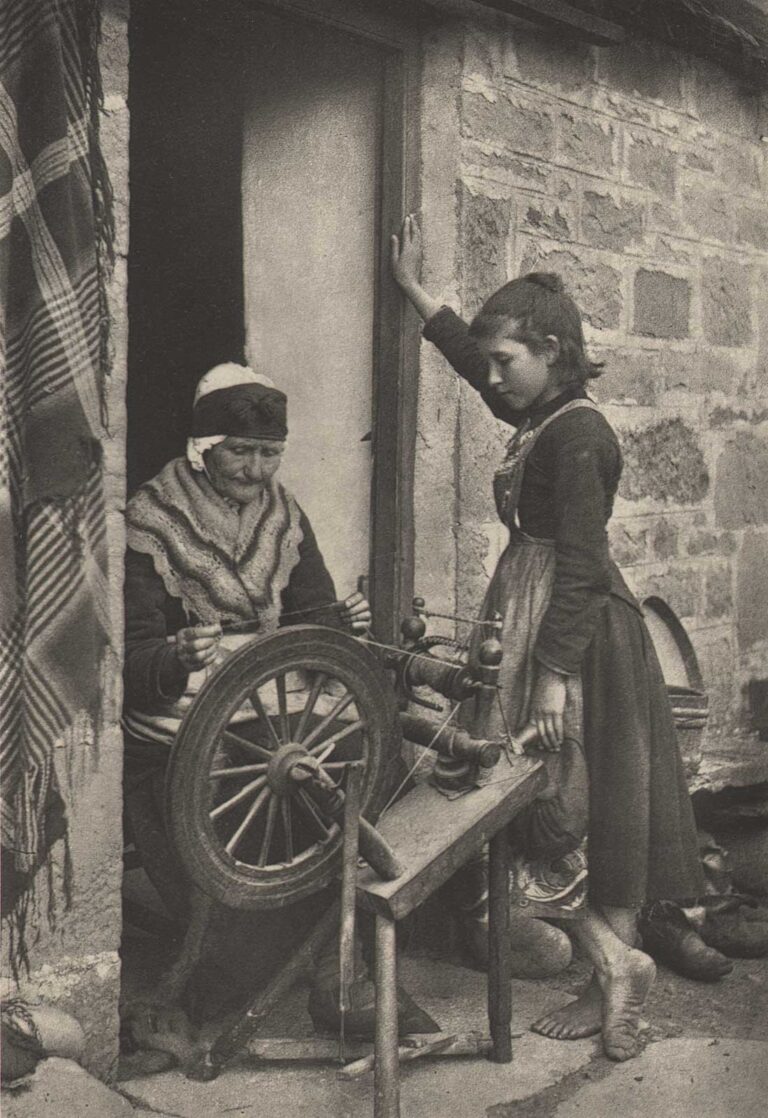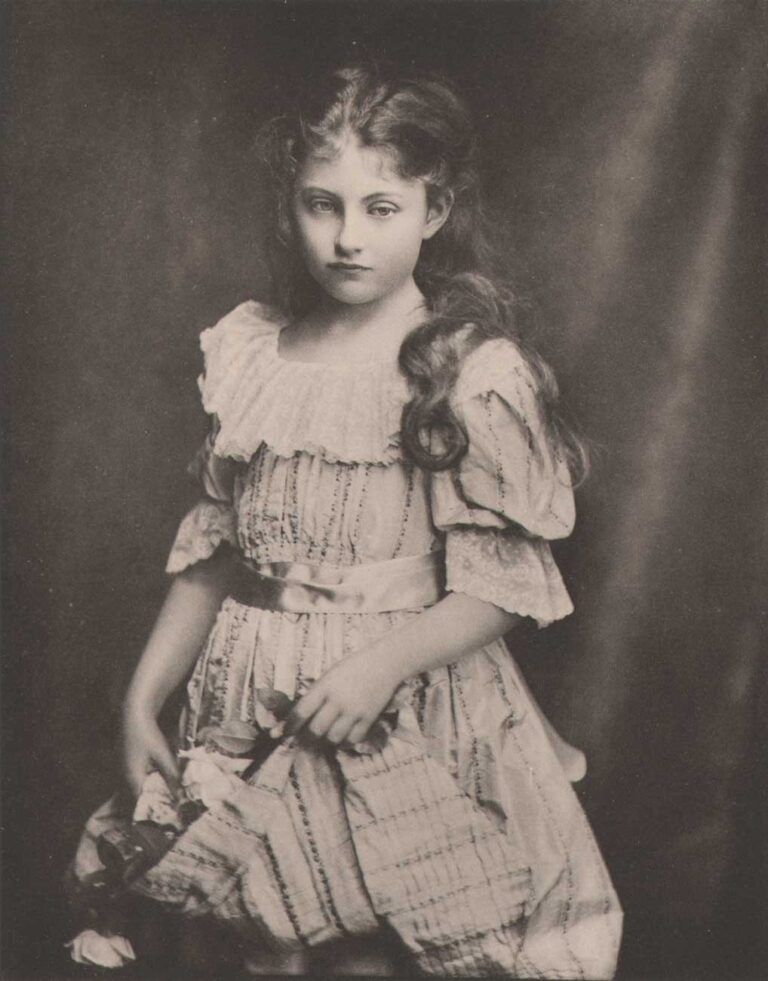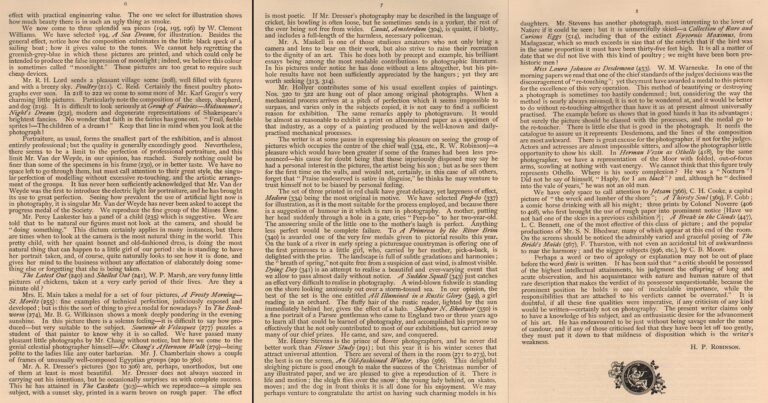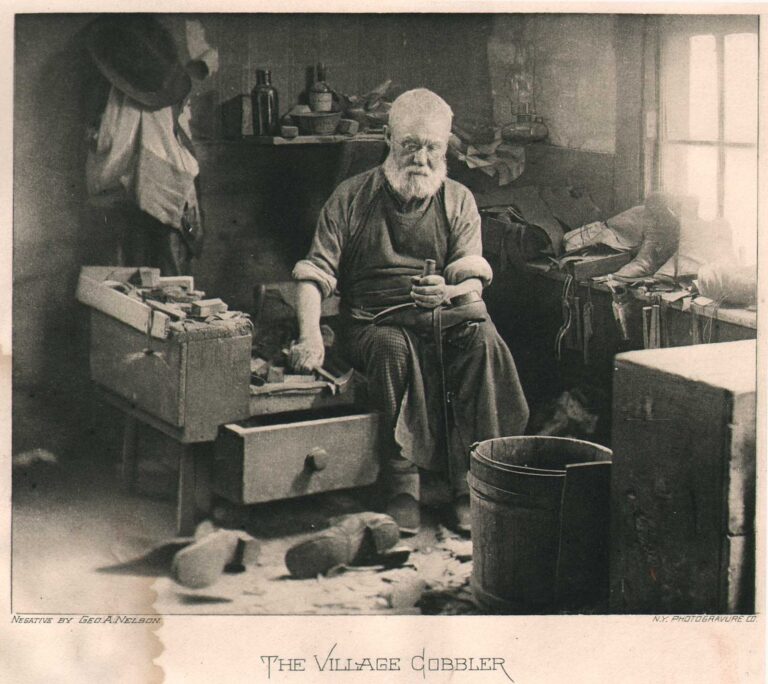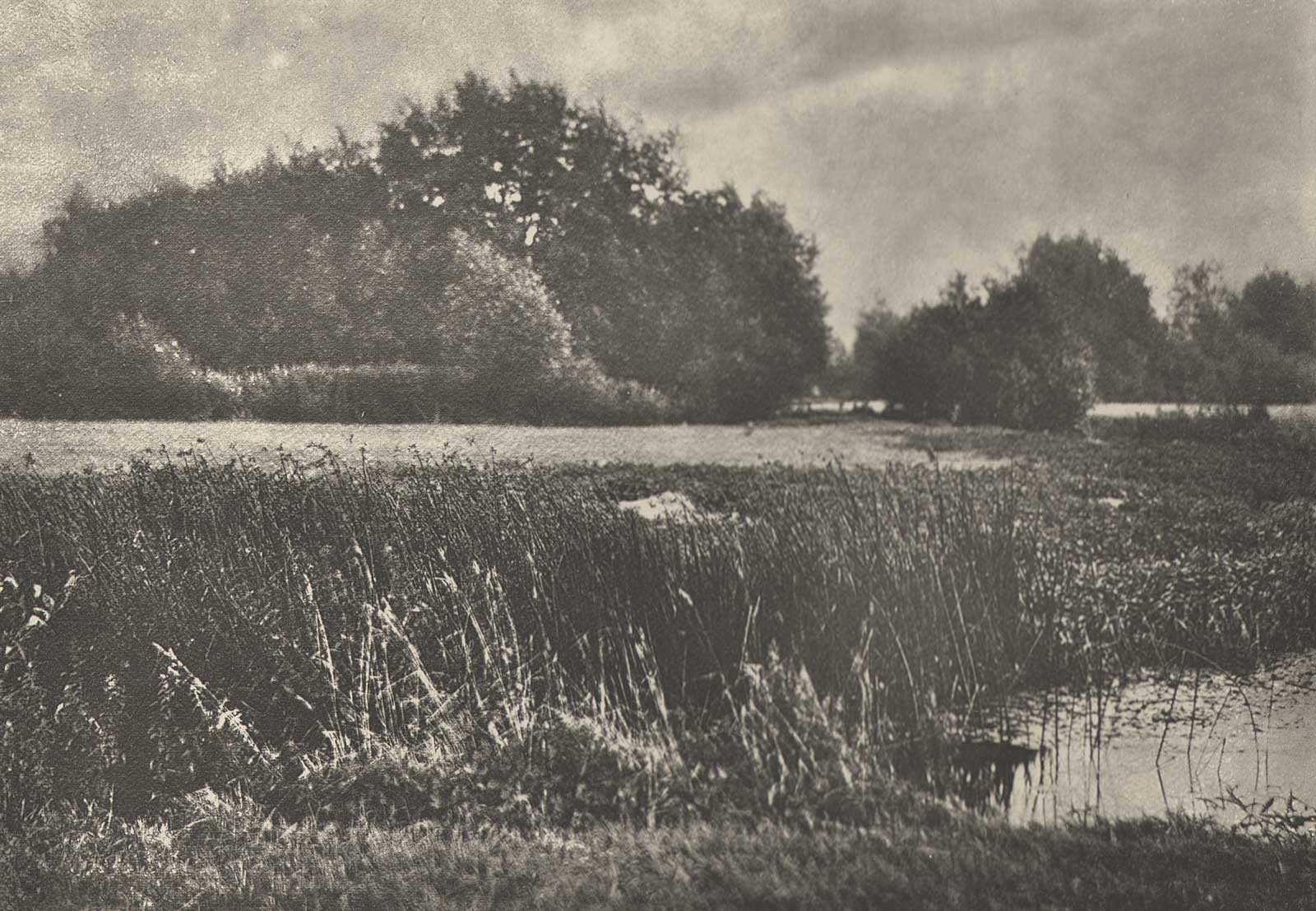
By Reedy Ways
Commenting in the accompanying catalogue letterpress, Henry Peach Robinson writes of Hinton’s work and this plate:
Mr. Horsely Hinton has, perhaps, gone as far out of focus as most of the school, but he has always stopped short of the pinhole. Last year he showed the defects of his heresy without the beauties; this year nearly all the beauties without many of the defects-at any rate, in one or two of his works. Apart from what we cannot help still thinking the misuse of material, his pictures have all the quality of art produced by legitimate means-composition, light and shade, and effect. By Reedy Ways (95) is his best, and shows how a simple subject, treated on art principals, may almost reach great art, even in out-focus-photography. It is very broad, without a visible effort to force the effect. This is obtained, or at all events greatly assisted, by the use of a suitable sky and double printing-a method of which we highly approve. We select this picture as one of our illustrations. Other of his pictures have much of the mystery and rich indecision of Nature. An Essex Marsh (99) is very good, the sky large and effective; the cattle and sheep lead the eye into the picture, and give space, and the gate affords balance. The Evening Ebb (98) has some well-placed figures. One or two of the others of the group of subjects we could spare; so many of a kind give a tiresome sameness of effect. Mr. Hinton is so good an artist that we wish he could see his way to produce his effects with what may be called more photographic means. Nature is not out of focus to healthy vision, and the lens offers special facilities for rendering detail over every other art. Every art uses definite means to definite ends, and in forming our judgement in any art we must first ask if the special means have been duly exercised. The elemental fault of Mr. Hinton’s photographs is that they are too like the product of another art. Mr. Oscar Wilde often crystallizes truths into few words. In a recent essay he says: “From the point of view of style, a healthy work of art is one whose style recognises the beauty of the material it employs, be that material one of words or of bronze, of colour or of ivory, and uses that beauty as a factor in producing the aesthetic effect.”
